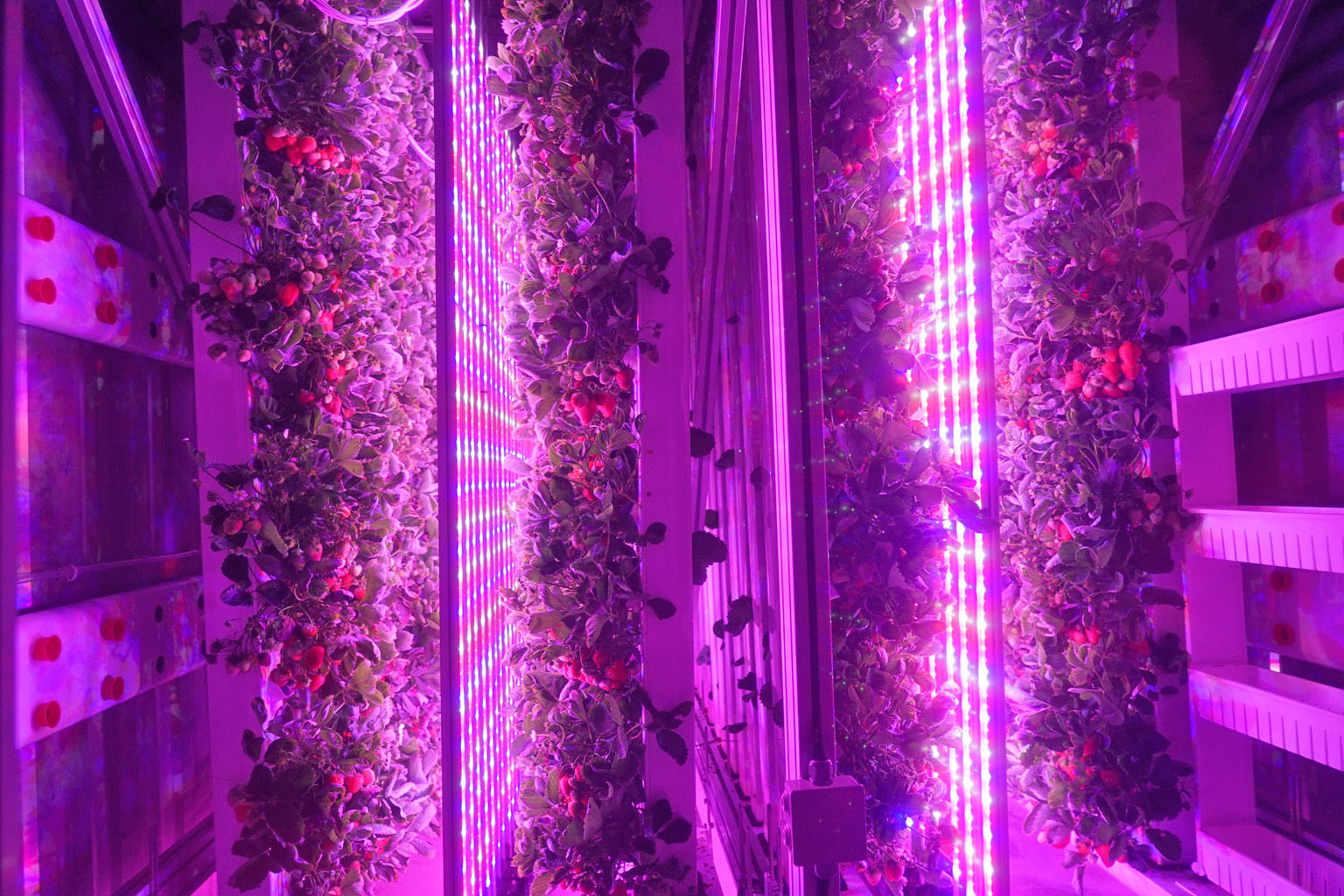Dubai is more than a symbol of sky-high ambition or a bubble of extravagant pleasures.
True, it loves its superlatives.
The planet's tallest building Burj Khalifa and biggest shopping complex The Dubai Mall can even be glimpsed in the same instant, so pervasive are the world-firsts in this competitive emirate.
But look beyond the glitz and the traveller will discover soul in the city.
This emerges in the artisanal places where free spirits purvey fancy sneakers, coffee or art.
Soulfulness is also palpable in enclaves where heritage has a modern face. Like me, you may encounter a young Arab woman clad in abaya and leggings who loves pedicures and says the biggest misconception is that her countrywomen are oppressed.
The vivid spirit is in the cuisine as well, be it affordable street food or lavish Indian-inspired dining, food trucks or a menu crafted by a talented Singaporean chef. Dubai is a rising culinary capital (see other story).

-
GETTING THERE
-
I fly direct from Singapore to Dubai on Emirates (emirates.com). To get around in the city, take a cab or use ride-hailing apps Uber and Careem.
TIPS
• In the United Arab Emirates, the weekend falls on Friday and Saturday. Malls remain open.
• Stretch the dollar with affordable, quality, Instagram-worthy stays such as Zabeel House Mini (zabeelhouse.com), where rooms can be booked for under $100 a night. Casual dining spots include the new La Mer beachfront (lamerdubai.ae/en), where burgers, ice cream and world cuisines can be relished in a cool locale. Elsewhere, look for hole-in-the-wall joints that serve shawarma, the flavour of the Middle East. Similar to kebab, the meat, such as chicken or lamb, is grilled on a vertical rotisserie.
• Families with children will enjoy Dubai. The safe, family-friendly destination has the indoor ski resort Ski Dubai (skidxb.com) and many beaches with cafes and turquoise water. Theme parks abound, centred on concepts ranging from Lego to Bollywood.
• Dubai is a city of change. This is evident everywhere, whether at the world's first MasterChef, The TV Experience restaurant (masterchefdxb.com) that opened in April or the Alserkal Avenue art district (alserkalavenue.ae) that has just added a concrete-clad venue designed by a Pritzker Prize winner. The constant transformation is a reason to visit Dubai or return to it.
On a recent four-day trip, I explore these layers of the metropolis that are not always on the radar.
ARTSY AND ALTERNATIVE
Alserkal Avenue (alserkalavenue. ae), an art district planted in an industrial zone, epitomises ever-changing Dubai.
Amid the contemporary galleries are cafes, boutiques, a bean-to-bar chocolate factory, arthouse cinema and other edgy spaces that are a world away from Dubai's shiny malls.
Emerging artists from everywhere rotate through a residency programme, which has inducted talent from Iran, Russia and New York.
Rare for Dubai, pets are also welcome in the district that began emerging in 2007 with the Syrian-owned Ayyam Gallery (ayyamgallery.com), whose Middle Eastern artists have confronted issues of war and identity.
The neighbourhood was elevated to an influential arts and lifestyle cluster in 2015 by businessmanpatron Abdelmonem Eisa Alserkal, whose family once owned a marble factory there.
I linger in the studio of French-Tunisian street artist eL Seed (elseed-art.com), who fuses Arabic calligraphy with graffiti.
His genre-bending work - calligraffiti - has appeared on Louis Vuitton travel trunks. Dubai Opera commissioned a hot-pink steel sculpture. His mural Perception, spray-painted on 50 buildings in Cairo, can be seen in its entirety only from a mountain 15km away.
At sneaker boutique thegoodlife (thegoodlifespace.com), set up by three Beirut childhood friends, hard-to-find kicks are venerated like pieces of art by the Emirati and expatriate clientele.
Mr Karim Nasrallah, 35, an owner of the sneaker store, says Alserkal Avenue is the perfect indie location.
"It shows that Dubai is not all about glitz. There are alternative and artsy scenes that are non-commercial and growing fast," he adds. "This place is popular, but still under the radar. It is about the forward thinking of Dubai and the Middle East."
I also like Chi-Ka (chikaspace.com), an art space and boutique where gorgeously designed kimono-abayas cross boundaries with hand-painted Japanese fabrics and flowing Arabic silhouettes.
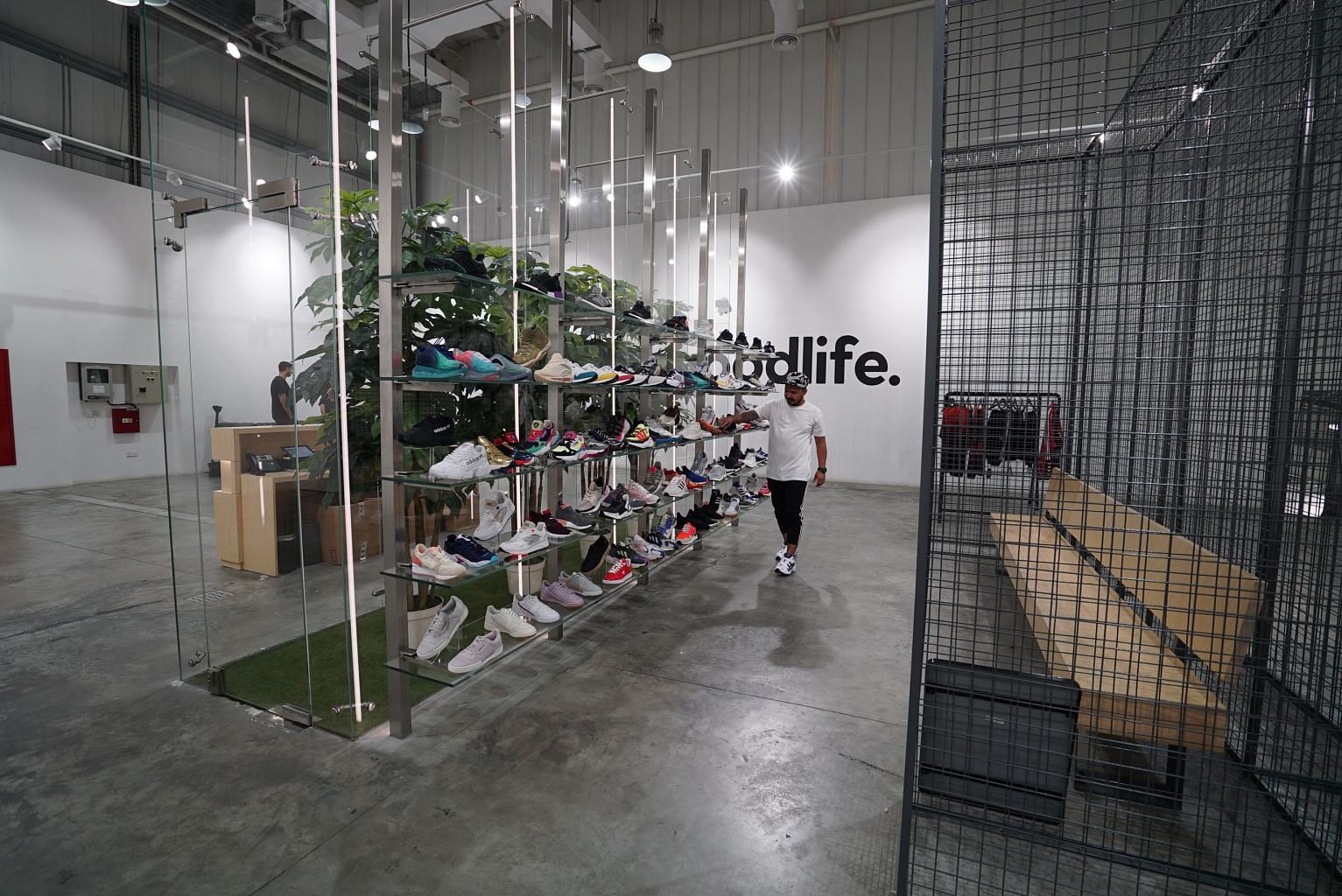
Chi-Ka and the 500,000 sq ft zone of revamped warehouses that make up Alserkal Avenue are really mirrors of the new Dubai - a big-little global city with a melting-pot allure, much like Singapore.
Adjacent to the district is the Courtyard (courtyard-uae.com), an eclectic, low-rise space with lots of greenery and a water channel. It houses a theatre, co-working space and hip, interconnected shops that are a re-imagined souk or Arabic marketplace.
In one spot, I wander through linked shops peddling potted plants, woven furniture and lattes.
Here, I discover another little story of Dubai. The Courtyard was built two decades ago by an Iranian architect who was a pioneer in deploying recycled materials.
He gathered lovely rejects from the old city and a shipyard for the Courtyard, a hidden gem with a human scale, and a beguiling contrast to the flashy architecture and malls that are constantly in the public eye.
HERITAGE IS HIP
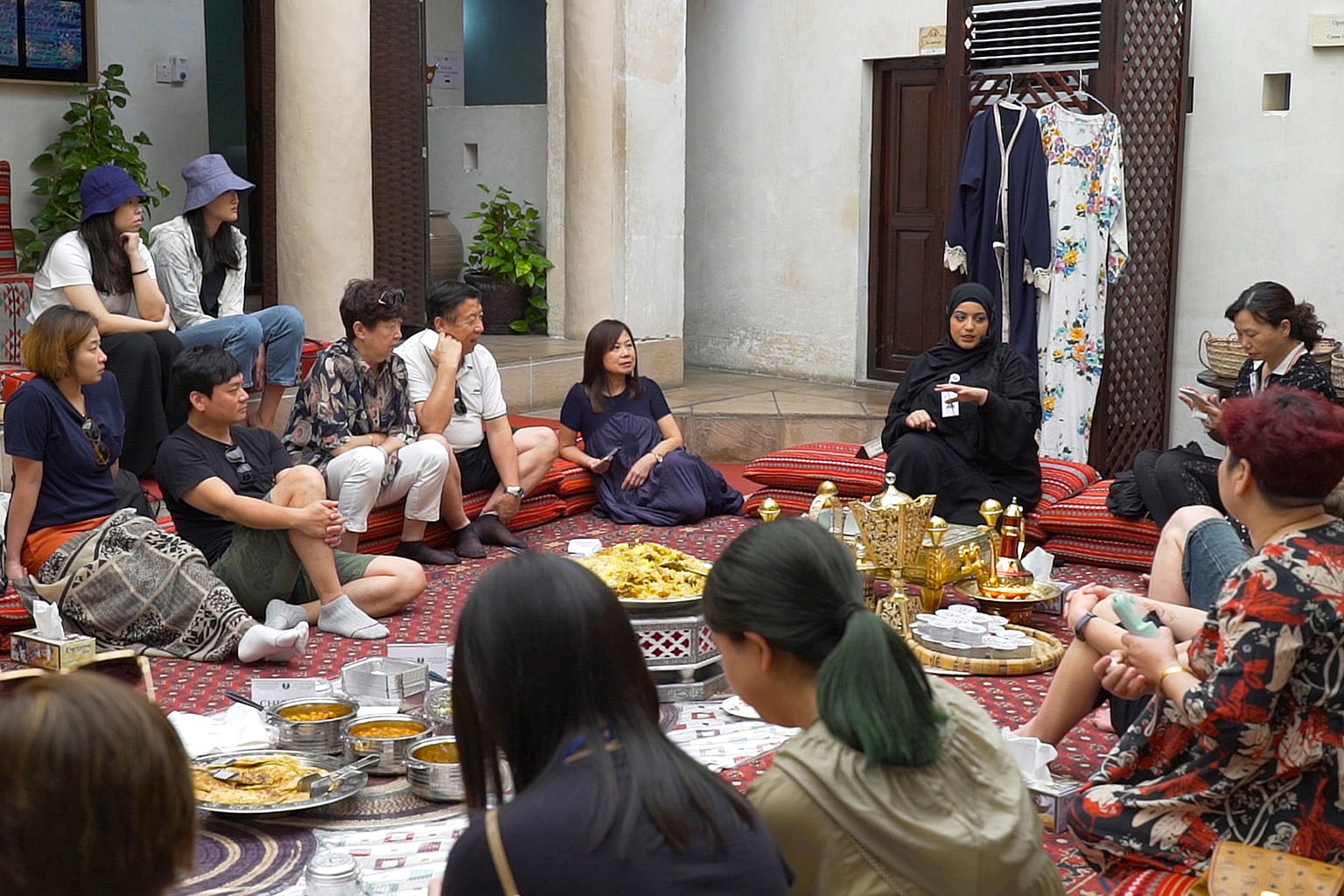
I keep seeking other faces of Dubai. Before my trip, my hosts at Dubai Tourism say I can ask inconvenient questions at The Sheikh Mohammed Centre for Cultural Understanding (cultures.ae).
Set in a restored wind-tower house, the centre serves an Emirati brunch in an air-conditioned, carpeted courtyard where foreign visitors loll on bedouin cushions as a host converses with us for an hour or so.
That is where I question Ms Farhayah Salameh Younis, 26, a presenter who asserts that Arabic women are not oppressed.
She makes independent choices, she points out. "Nothing in Islam says I have to dress in black. I can wear white, maroon and pink, just not in a see-through fabric."
Sheer black, however, is perfect as it is non-revealing, cool and flattering.
"I don't have to worry about gaining weight," she quips.
She takes all questions - anything from Emirati royalty (social media-savvy) to what she does for fun (shop, do make-up and sleep).
On Dubai's competitive spirit, she declares: "If New York and Singapore can do it, we can do it. There's no 'impossible'."
On my previous trips to the United Arab Emirates, Qatar and Oman, I had stepped into museums where unfamiliar Arabic culture came alive for me.
The displays, often highly interactive and beautiful, are clearly products of intelligent design and the deep pockets of the Gulf nations.
Dubai's new Al Shindagha Museum (alshindagha.dubaiculture.gov.ae), a complex of museums that is still opening in phases, conveys the story of the emirate through multimedia experiences and artefacts.
The two immersive pavilions I pop into are Dubai Creek: Birth Of A City and the Perfume House.
Together, the two museums show how far the city has come, from a fishing village and pearling centre to today's metropolis.
In the Dubai Creek pavilion, I play an interactive game picking up passengers on a little virtual abra or an old-time water taxi.
Soon, I am lost in time, watching a multimedia show on the city's early years, including the seafaring days and later a time of depression after Japan's formidable pearl industry shredded Dubai's humbler sector.
In the Perfume House, which highlights the scent history of the emirate, I sniff bottles of fragrances such as amber and rose.
I scroll down an iPad to read about perfume in beauty rituals.
INDELIBLE DUBAI MOMENTS
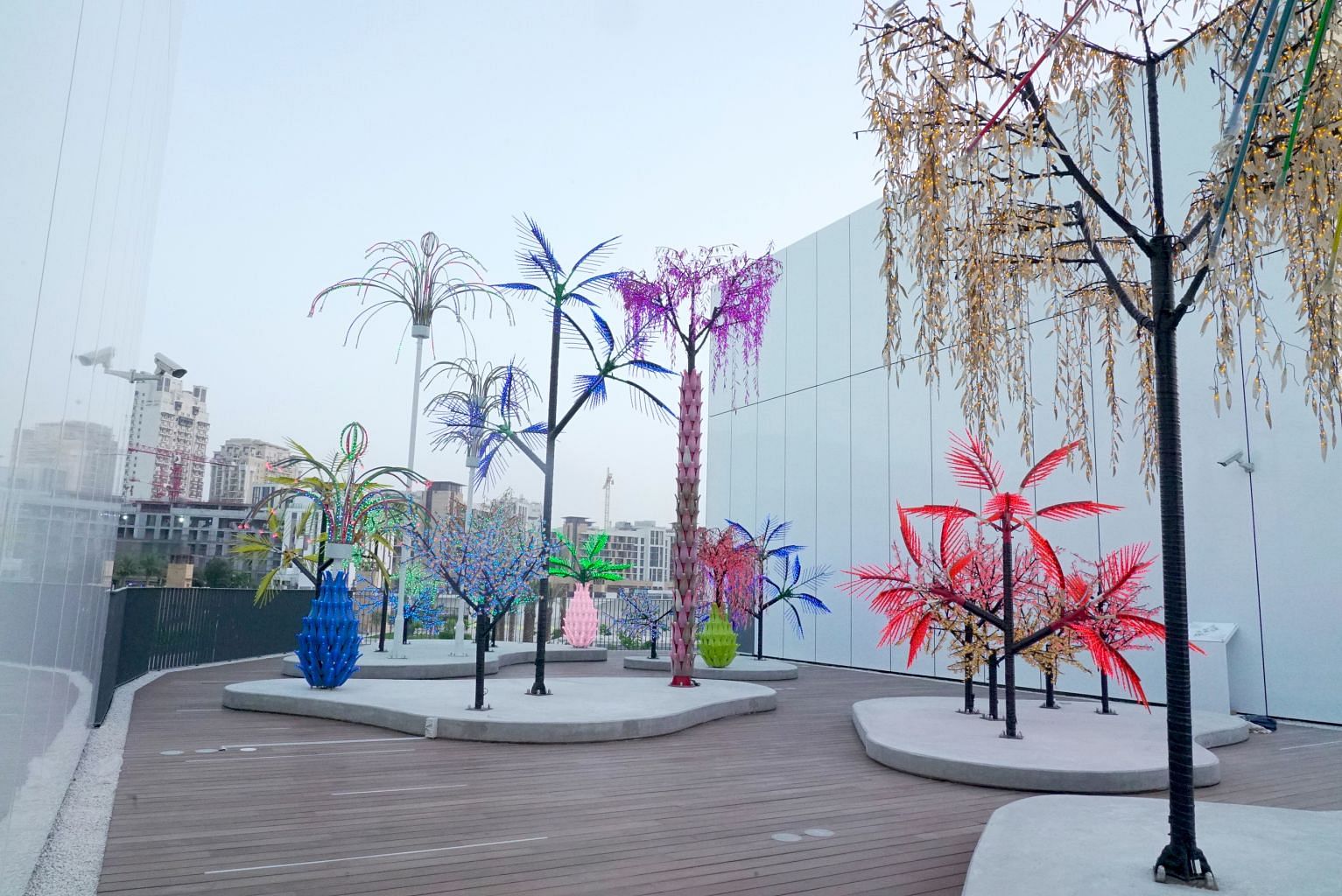
My Dubai moment happens in an improbable orchard of steel and plastic trees festooned with light-emitting diodes.
I have walked out to an upper veranda of the new, intimate Jameel Arts Centre (jameelartscentre.org), which displays contemporary art, when I spy the trees that remind me of the sci-fi/fantasy film Avatar (2009).
The veranda overlooks the Dubai Creek - like a Middle Eastern sibling of the Singapore River - where the story of Dubai began.
The trees are timed to light up when the sky gets darker. But I am on a tight schedule so the staff, gracious like other Emiratis I meet, flip the switches for me.
Close to sunset, a gentle light suffuses new and old Dubai, colouring both its over-the-top skyline and historic creek.
Surprisingly, another Dubai moment takes place at one of its flashiest architectural feats.
At the Dubai Frame, a gargantuan golden frame that rises into the sky, I walk through immersive galleries that present the past, present and future of Dubai.
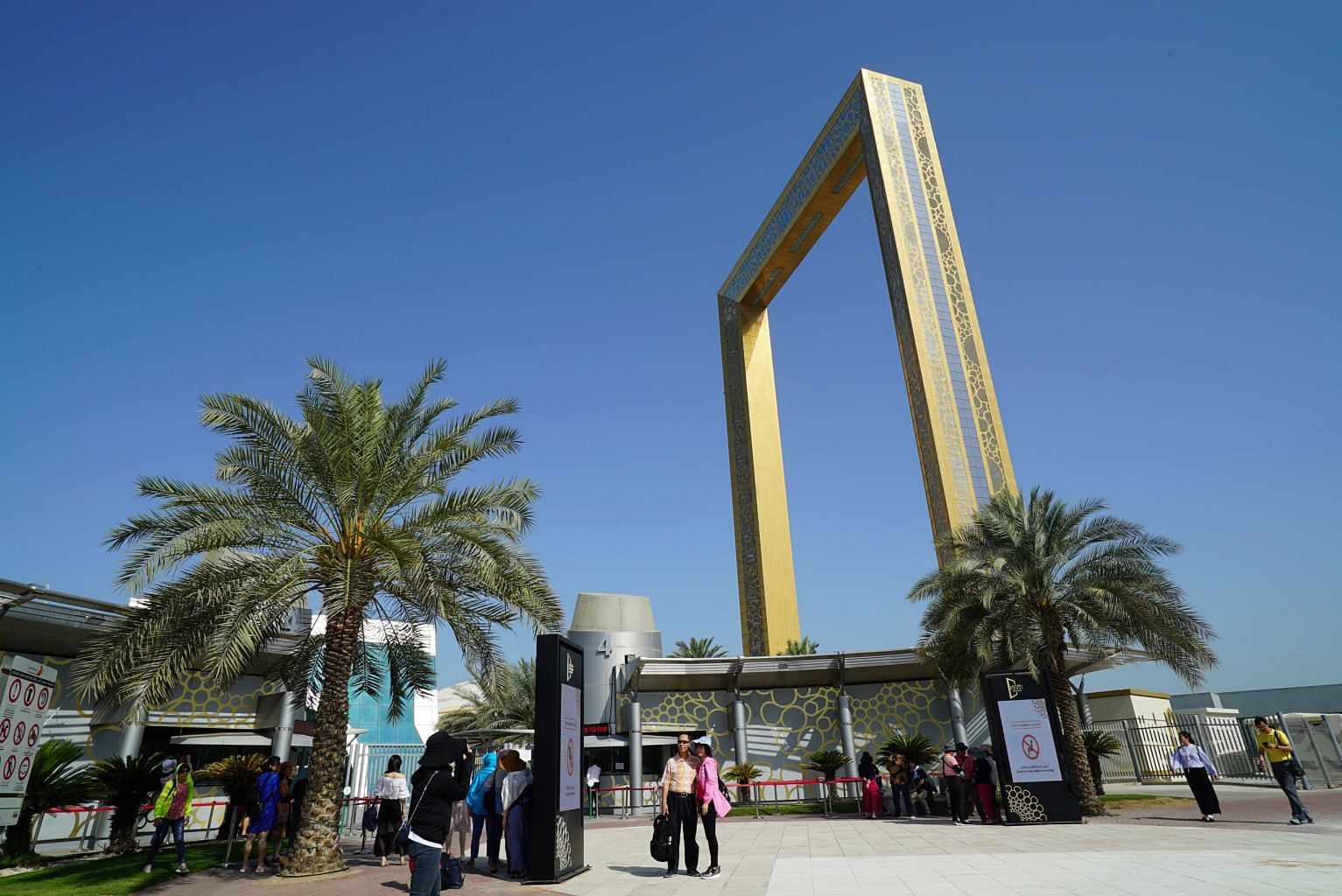
I step onto a skywalk 150m above the city, which fascinates and terrifies me. The glass turns transparent when I walk on it, which induces a fear of falling.
After repeating the jaunt, however, the skywalking is normalised. Much like the way Dubai's artifice grows on travellers, I imagine, even as we do a deeper dive beneath the sleek surfaces.
Just like Singapore is not the country portrayed in the Crazy Rich Asians (2018) movie, Dubai is not all about Crazy Rich Emiratis.
Nuances abound in any society.
The metropolis is a hop away from relaxed beaches with turquoise water and city views.
I stop by several beaches, where I experience the mash-up that is Dubai.
On Kite Beach, I hear interlacing calls to prayers from several mosques as I enjoy a designer burger from the Salt food truck (find-salt.com).
At JBR Beach, with its chill cafes and roaring jet-skis and waterfront condominiums, women clad in bikinis or covered in abayas sit serenely in the same space.
It is a live-and-let-live attitude, where each woman has a right to be there.
While liberal Dubai is not wholly representative of the diverse Arab world, it is still a whiff of the region and an easy stepping stone into the Gulf states.
And Dubai itself is never really what it seems. Intricately layered and often imaginative, it is more than glitz and the intoxication of money.
• The writer and multimedia journalist Azim Azman were hosted by Dubai Tourism.
• Follow Lee Siew Hua on Twitter @STsiewhua
City of flavours
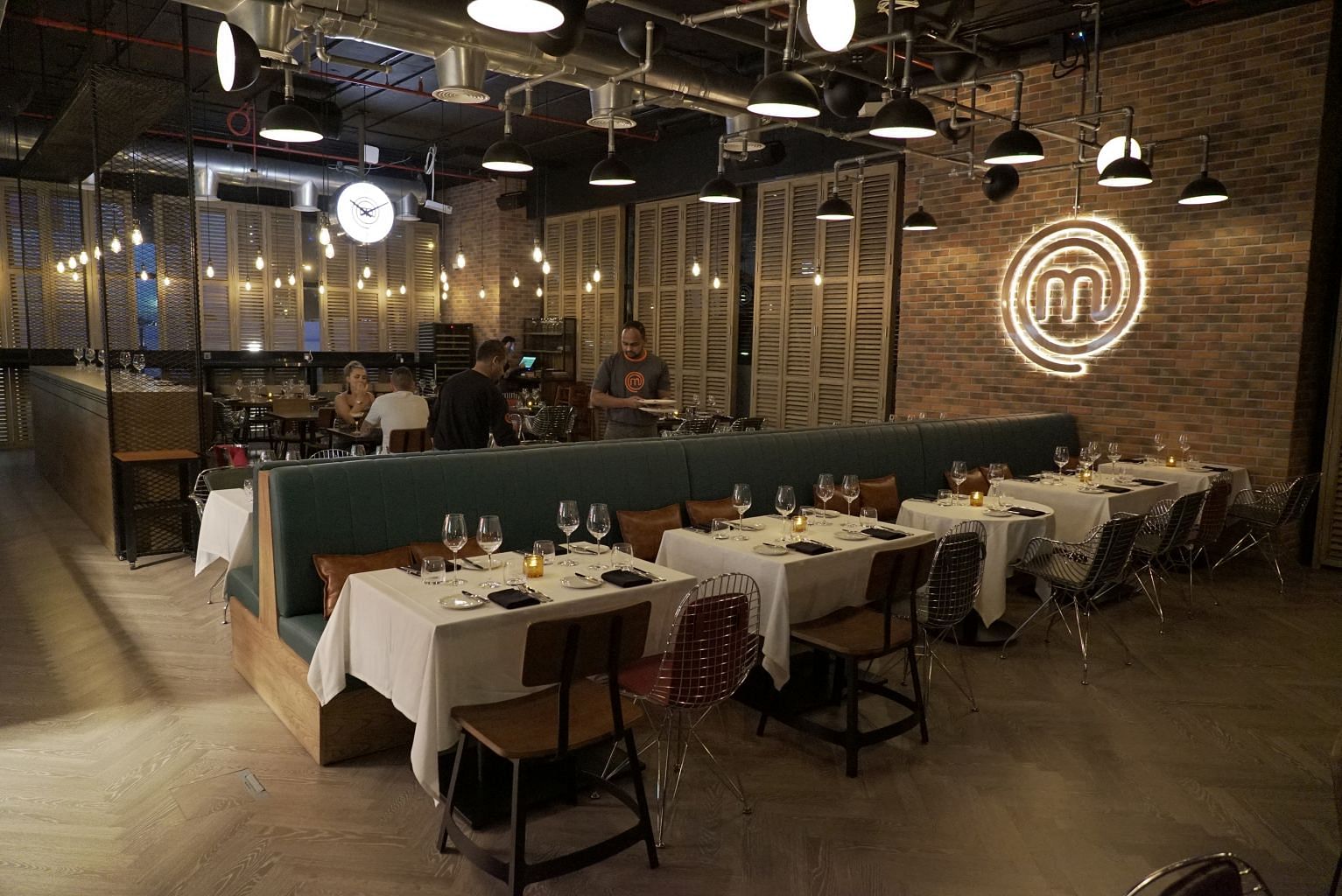
For food lovers, Dubai is a round-the-world culinary journey that never ends.
Its food map girdles the globe with anything from the world's first MasterChef, The TV Experience restaurant to luscious strawberries farmed in the desert with French technology.
High-end, Indian-fusion restaurants and hip food trucks have equal appeal in this city of crossroads. And, of course, there is Arabic coffee spiced with cardamom and saffron - apart from low-fat lattes in the uber-cool cafes that saturate any urban terrain.
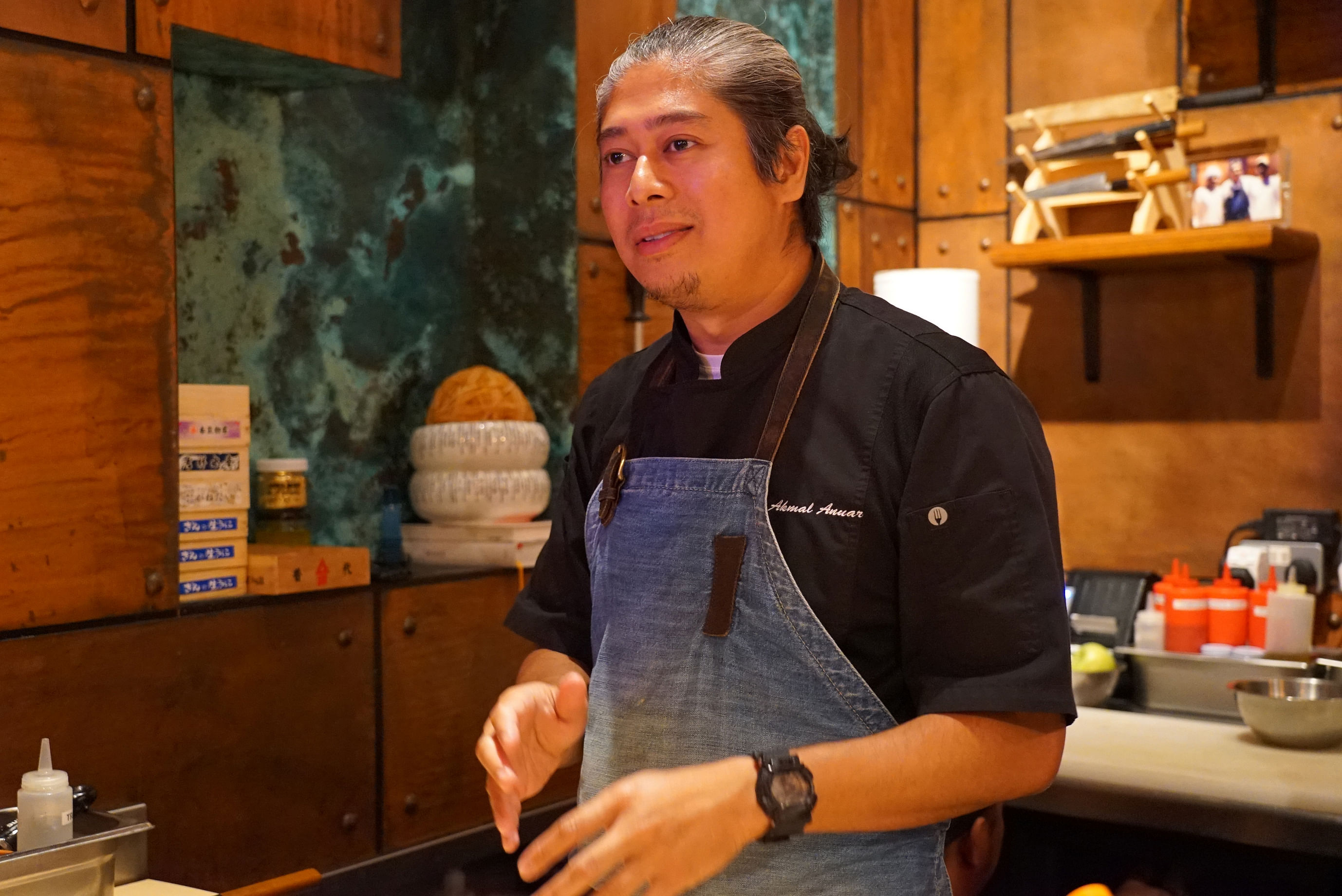
It is in this foodie wonderland that Singaporean chef Akmal Anuar, 37, has planted 3 Fils (3fils.com), a casual restaurant serving Asian-inspired small plates.
Once the head chef of modern European restaurant Iggy's in Singapore, he sold his five-room Housing Board flat to pursue his dreams in Dubai.
His first move was Zengo, a Latin-Asian concept, which celebrity chef-restaurateur Richard Sandoval opened in 2012 in collaboration with him. Then in late 2016, he opened the award-winning 3 Fils with two Emirati "dudes".
He seats our trio at his private Chef's Table. We admire his dexterity and focus in conjuring up dishes with exquisite ingredients such as maguro from Kagoshima, Palestinian olive oil, Chinese beluga caviar and Peruvian white asparagus.
There is a poignant moment when the chef presents his Emo Fries, so named because "potatoes are cheap and there was not enough cash flow" in the beginning.
The son of nasi padang hawker parents, he is in a good place now. He easily fills the 30 seats in the stylish interior and another 20 outdoors. Dining is a lifestyle for the sociable people of Dubai, he observes.
Unlike 3 Fils, the MasterChef, The TV Experience restaurant (masterchefdxb.com) opened to much fanfare on April 30.
Its decor features the clock and brick wall of the blockbuster TV show. Watched by 300 million people globally, the show is a quest for the best amateur cooks.
Dubai is the first to host a MasterChef restaurant. The menu is stocked with creations by MasterChef champions, including 2008 Britain winner James Nathan's truffle and pea soup with parmesan galette.
Best of all is the Mystery Box that head chef Margarita Vaamonde-Beggs, 34, a Venezuelan, brings to our table. I get to pick ingredients from the selection and my choices are sea bass, jalapeno, Jerusalem artichoke and quail's egg.
Soon, the chef returns with a sea bass encased in a paper parcel (en papillote) brightened with jalapeno and grilled lime. On the side, a poached quail egg nestles on a cloud of Jerusalem artichoke puree. She completes her spontaneous creation with a tomatillo sauce from her Latino heritage. "The big seller is the Mystery Box," she says. "Not every restaurant is willing to put their chefs on the spot."
Indian restaurants are a very visible presence in Dubai, just like the two-million-plus Indian residents who make up about 30 per cent of the population.
Tresind (tresind.com) is a modernist Indian restaurant that guests enjoy for its high-end menu and theatre. We are welcomed with scented smoke that rolls cloud-like over our table, the hints of lemon zest and musk calming us down. A joyful prelude to a multi-course excursion.
I delight in the playful concoctions of the young chefs. The puri, a deep-fried round bread sold on streets, is re-interpreted as a tiny crisp shell served with a green pearl of coriander and tamarind juices.
A lemon-tree bonsai is a botanical setting for lime sorbet. Kedgeree, a comfort food of rice and lentils, goes elaborate with a mirrored tray of 44 ingredients, from peanut powder to pomegranate, that are tossed into the pot one at a time.
Fun prevails at the Last Exit (lastexit.ae/en), where food trucks look cheerily retro in primary colours and under fairy lights.
Close to 11pm, on a cool night, we sip sweet, milky karak chai, a black tea with cardamom and evaporated milk that costs 10 dirham (S$3.80). The spiced tea, an Indian import, is so embedded in the Dubai lifestyle now that grabbing a cuppa is called "karaking".
Dubai keeps its Arabic coffee tradition alive, however. At the Dubai Coffee Museum (coffeemuseum.ae) set in the historic Al Fahidi district, and elsewhere, I drink lightly roasted coffee scented with cardamom and saffron.
Arabs have long bonded over conversation and tiny cups of coffee, sipped in between bites of dates. The gahwa (coffee) custom is on Unesco's list of Intangible Cultural Heritage of Humanity, along with falconry.
Serving coffee is an element of Arabic hospitality, which I also experience on a desert safari (platinum-heritage.com). It is romantic driving through the desert of super-fine sand with wind-drawn waves, and fun riding a camel.
After watching a peregrine falcon show and letting the high-speed predator, named Flux, perch momentarily on my arm, it is time for jaunty Emirati dancing and a banquet. I love the light, soothing camel milk that accompanies lamb rice, lentil soup and other hearty fare.
Hearty is also the taste of affordable street food in Dubai. I especially like the shawarma or rotisserie-grilled meat. I choose chicken shawarma (9 dirham) from a small shop in the blue-collar Satwa neighbourhood, during a walking tour with Arabian Adventures (arabian-adventures.com) from the Emirates Group.
The no-frills Ravi (Dubai, Satwa Shop #245, Al Dhiyafa Road) is cherished by Emiratis and expatriates for its Pakistani curry, among many choices. A dinner for two costs no more than 60 to 70 dirham.
It is pleasant to sample street food in a city with an expensive reputation.
Another surprise is to find strawberries grown in a climate controlled shipping container in the desert.
I taste the juicy, fragrant strawberries in the avant-garde Sustainable City (thesustainablecity.ae) - a cluster of residences with biodome farms, retail shops, an equestrian club and an upcoming autism village that aim to be a zero-net-energy city.
We squeeze into the futuristic container that produces 5,000kg of strawberries a year from 1,000 plants. Its monthly water consumption is equivalent to what one villa uses a day.
Strawberries in Dubai - that is the essence of the city that embraces the best and boldest the world offers.
